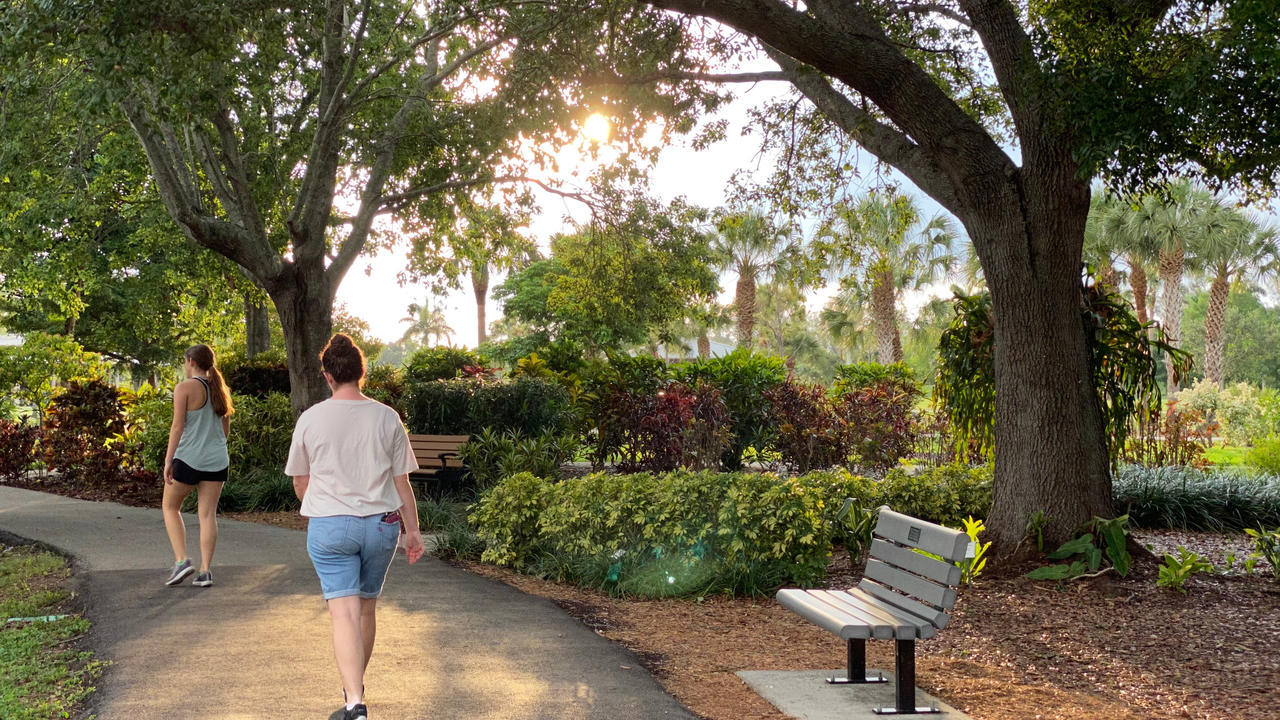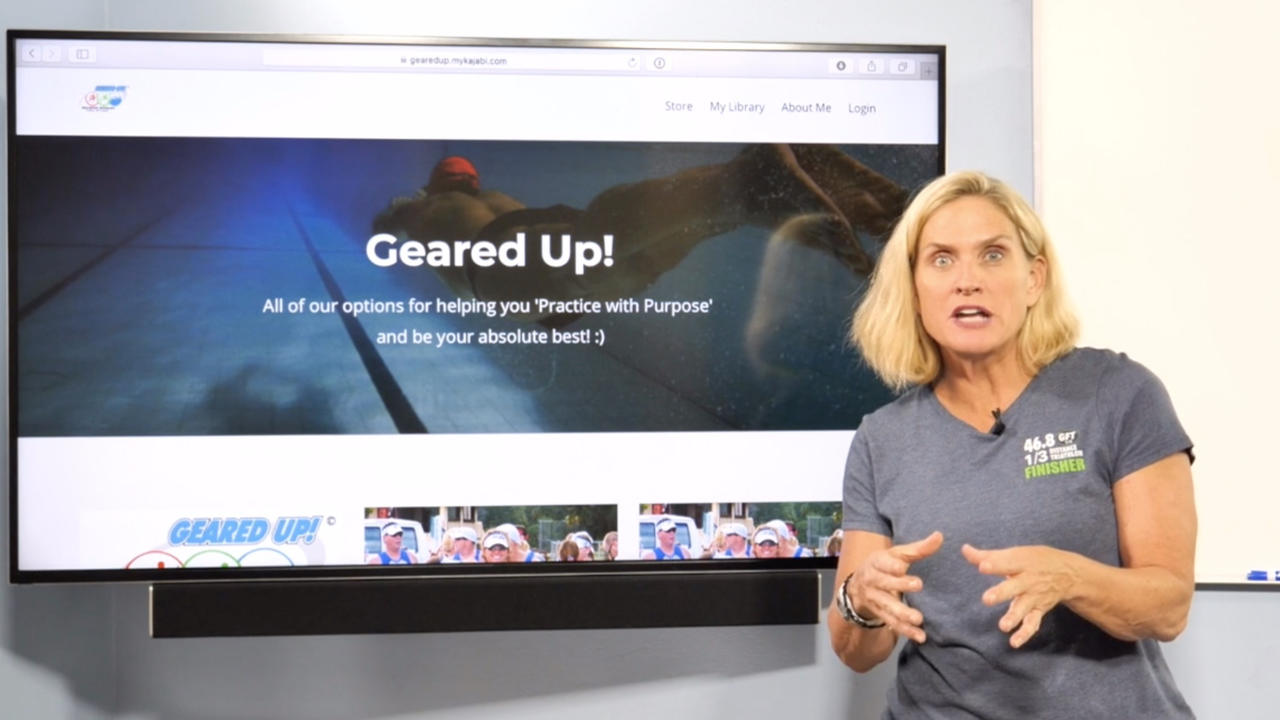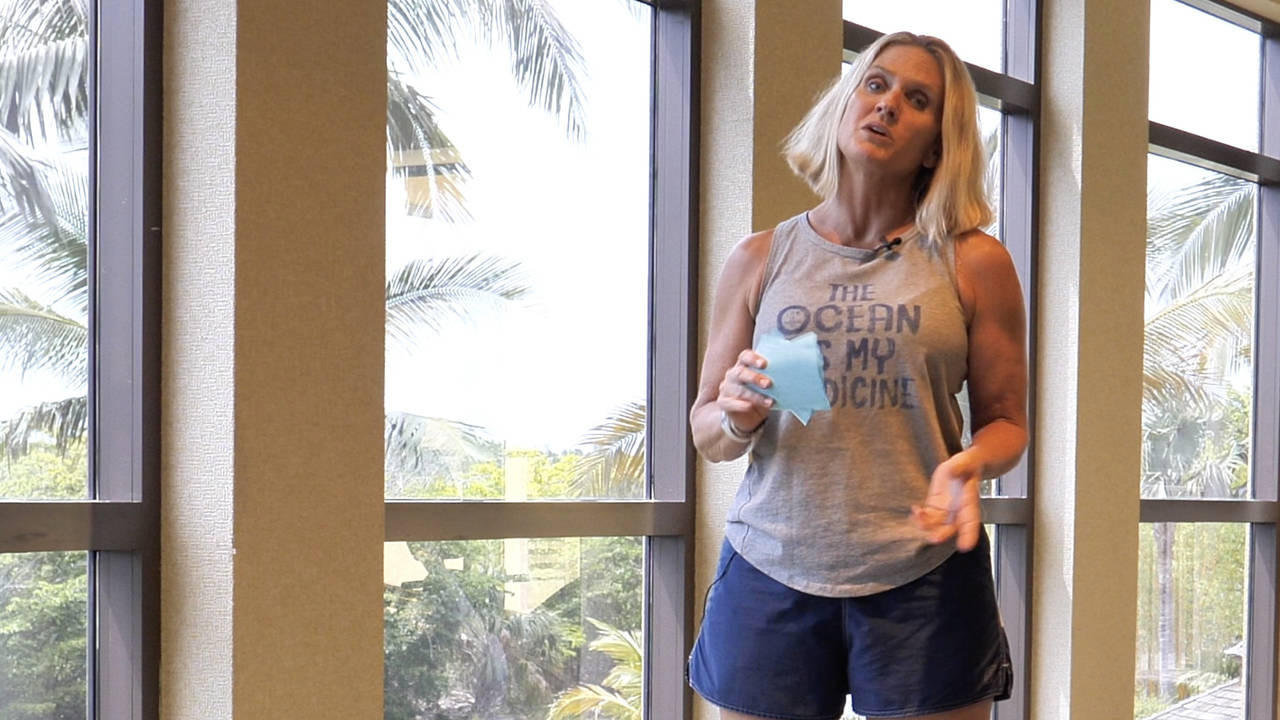Fitness Inspired by Life

Paige & Josie enjoying a walk through the gardens of Lakes Park in Fort Myers, Florida. Photo Courtesy of Charly Caldwell II (Paige & Josie's dad)
Back in the 1960s, Universal and Nautilus built and marketed resistance-training machines for both gyms and home use.
These companies claimed their machines provided superior training results due to their design and ability to isolate muscle groups.
This movement towards muscle isolation created the gym based model of training, which many people use today.
This training model has grown to become very popular and is universally synonymous with weight training.
However, this model falls short for athletes looking to improve performance parameters and for individuals looking for better function with daily living activities.
For example, bodybuilders might look good, but that does not mean that they are necessarily fit or especially strong outside a given movement.
For example, I know many bodybuilders who cannot touch their toes.
This la...
Exercise Snacking?

Taking a beautiful exercise snack (a short 2,000 step walk) in gorgeous Lakes Park in Fort Myers, Florida. Photo Courtesy of Charly Caldwell II
Everyone will read the title and think I am talking about a healthy snack you can have before or after exercise, or mindful snacking throughout the day.
Both are great ideas but neither are true.
What I am talking about is your ability to use exercises just like you would a snack.
Throughout the day, if a rumble emerges in your belly you may reach down for a small apple or a handful of nuts. You can use exercise the same way and insert bits of exercise throughout the day – even if you already go to the gym 5x/week.
Exercise more through snacking?
Yes.
The human body was meant to move and a majority of age related decline can be traced back to a root cause - sedentariness.
Throughout a busy day we are not as active as we were fifty or even a hundred years ago, but we are still consuming on average more calories. We combat this by joini...
The Human Brain is the MOST Amazing Computer Available - Learn How To Use It Wisely

Reflecting on Life in Lakes Park in Fort Myers - A Powerful Practice for Creating & Maintaining a Positive Psychology - Photo Courtesy of Charly Caldwell II
Some people think that a strong body is the biggest strongest asset we have.
I beg to differ.
You can have the strongest body, the healthiest heart or the biggest biceps BUT if you don’t have a strong mind, you will fall short every time.
If you want to make positive changes in your life, your fitness and/or take your training to the next level, you need to think about training your brain.
Training the brain does not involve any Jedi mind tricks. It does however require a desire to change, the right beliefs and a solid plan of action.
First, decide what’s holding you back?
Decide what needs to change. What about your subconscious is holding you back? The idea of success? Self-worth or a lack of belief that you deserve to be successful? Lack of skills? Do you need to learn a new skill to compete at a higher level?
Determine exa...
Harness Power to Develop Running Efficiency

Harness training involving weighted sleds, parachutes and resisted and assisted partner sprinting is becoming increasingly prevalent in gym and outdoor training environments.
However, before it filtered across to mainstream fitness, it had its origins in sport-specific training.
Track and field has been utilizing such training methods for nearly the past 3 decades, and it has become more prevalent in elite team sports such a football, soccer and hockey.
The application of harness training really excels in the development of running speed, stride efficiency and acceleration.
Pretty much any type of resisted sprinting activity, whether it’s with a sled, a chute or partner training, works on force development, because to overcome the given resistance, you must generate more force while you’re in contact with the ground.
In addition, by slowing movement down using resistance, participants can feel the correct body position they are striving to achieve and improve their technique on the ...
Fueling on the Run, Finding Balance for Busy Lifestyles

Angie sharing delicious things & ideas in the kitchen, filming the 14 Day Fit & Fresh Challenge (a bonus in our fantastic Monthly Program!)
For those of us with busy and active lifestyles, it can be a real challenge to keep the body sufficiently fueled day after day.
Between work, working out and the rest of life, we can end up eating on the run more than we would like to. Cue food preparation.
You’ve probably heard or read that you increase your chances of eating poorly if you are caught out without food and that advance meal prepping is absolutely the answer.
For some, perhaps, but not everyone wants to spend their Sunday afternoons chopping onions, weighing out chicken and adding just enough cheese to keep the food calculator happy.
For many, especially those who have only recently embarked on a training program, food prepping can be a source of stress and even the most hardcore food preppers would be pushed to admit they will do this forever. Life eventually gets in the way.
Find...
Don't Get Twisted Out of Sorts by an Ankle Sprain

Angie in the Fitness Center - helping, teaching and sharing best practices.
Ankle sprains account for approximately 40% of all athletic injuries and are the most common injury in sports.
Ankle sprains are most likely to occur during activities that involve running, jumping or quick directional changes.
The key to avoid ankle sprains and staying off the injured reserve list is exercise management to improve both muscular strength and muscle proprioception.
Most ankle sprains fall into one of two categories: acute and chronic.
Acute injuries make up roughly 85% of all ankle sprains and occur when the foot is inverted and planter-flexed. This means while your toes are pointed and the ankle rolls away from the body. This could occur to the basketball player landing off a jump with poor proprioception or to a runner cutting the tangent to make a light (who me?) with weak muscular strength in the ankle.
The remaining 15% of sprains are commonly classified as chronic ankle instability or ...
8 Essential Exercises for Athletes with Arthritic Knees

Jason, Angie and Heidi helping, teaching and showing you best practices in the 20 Day Core Challenge (available in our Monthly Membership program!)
Stronger muscles can relieve the load on your joints and reduce arthritis pain and inflammation...
Here's how:
Just because you have arthritis doesn't mean you have to say goodbye to exercise.
But many people with this condition aren't meeting the recommended federal guidelines of 2.5 hours of moderate movement each week — and that's a shame, because physical activity is one of the best ways to combat the pain and stiffness associated with arthritis.
"A lot of people with arthritis stop moving."
says Lee Kaplan, MD, associate professor of clinical orthopedics at the University of Miami Miller School of Medicine in Florida.
In fact, he emphasizes, people should be doing just the opposite — seeking exercise and actively strength-training their muscles in order to reduce the load on their joints, which in turn can cut down on inflammation...
Running Strategies for Success

"A great afternoon run in Lakes Park, Fort Myers, Florida..."
Fabulous temperatures, coupled with New Year’s Resolutions, inspire many an athlete to take their running to task and try a 5K, a new distance or set a new personal record.
Whatever your goal, heed a few top tips and running strategies to ensure your running success:
- Start with a dynamic warm-up and save the stretches for the end. Runners often experience tightness in certain muscles like the gluteus maximus that can lead to inefficient movement patterns and decreased performance. Begin all runs with a dynamic warm up simulating the movements/range of motion your muscles will go through during your run. Not only will this promote flexibility but also it will help reduce the risk of injury. Save the deep static stretches until after your run when your muscles are most pliable and always hold stretches for at least 30 seconds.
- Maintain good cadence. Running with shorter, quicker strides will mean that your body spends le...
Help Kids Develop Fundamentals to Boost Confidence and Enjoyment in Sport

"It's a beach play day for Charly and his girls..." 🏐🏝❤️
Kids who play do better period.
They experience greater health benefits, do better socially, have higher grade point averages, higher graduation rates and more college acceptances.
Children’s participation in sports is so important that schools, municipalities and government agencies have devoted entire campaigns to its promotion. But where does it start?
Children do not automatically become proficient at sports.
Some will be naturally more adept than others, but they all need to be taught fundamental motor skills and given the opportunity to progress through appropriate development stages to be successful.
Motor skills are voluntary, learned movements made by the human body to achieve a task, such as a child twisting their body and moving their arm to throw a ball. By mastering fundamental motor skills such as a basic sprint, vertical jump, side step or leap, children will have the basic skills needed to participate i...
Bust a Bad Mood with a Positive Attitude, Belief & Exercise

Sports psychology and the mind-body connection get a lot of lip but how often do you practice what is preached?
Tug McGraw once said, “You gotta believe!” and we do. We must believe in our talents and ourselves if we want to accomplish any of our dreams, not just in sports but in life as well. We must believe we can push the extra mile, run the extra set and trust both our bodies and minds to carry us through to the next level.
This belief is not just a physical manifesto, it’s a state of mind and we need to be of sound conviction to make it happen. We must recognize and apply the importance of our minds and our moods and how our moods affect our performances.
So, what happens when your day goes awry, something annoying or frustrating happens and as a result you spend the rest of the day in a foul mood?
You start binge eating, skip your workout and instead of going to Yoga you head to happy hour for a few too many, not the healthiest of choices. There are several strategies you can...

